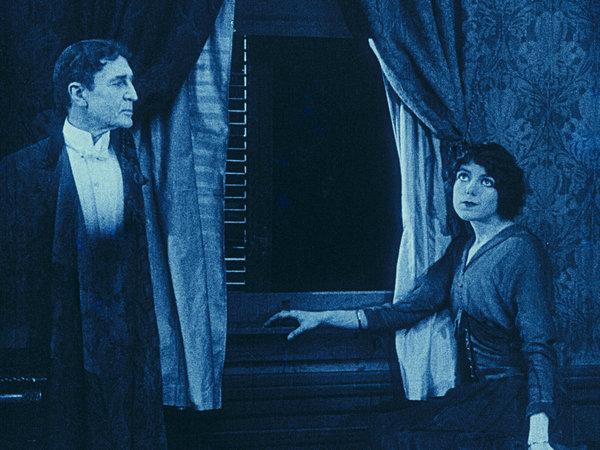I have loved Sherlock Holmes since I was in fifth grade. The great detective inspired my interest in the Victorian novel, in dressing like a page boy from the age of eleven to the age of fourteen, and even in Dracula, Edward Gorey, and classic film (my first Holmes was Jeremy Brett, my second Basil Rathbone). I have been to the Sherlock Holmes Museum at 221b Baker Street twice. Holmes has been a constant feature in my life and will continue to be for years to come. So when the first Sherlock Holmes film committed to celluloid was discovered several years ago, I was ecstatic but also deeply saddened that I couldn’t go see it when it screened.

Sherlock Holmes represents a sort of coup for Sherlockians, for the lead actor William Gillette is one of the first to portray Holmes on stage and screen, inaugurating a theatrical and cinematic tradition that has endured to this day. Gillette is responsible, in large part, for the view we currently have of Sherlock Holmes, including the shoehorning of romance into a story about a “human calculating machine.” This adaptation of his own stage play was thought missing for years, one of the great lost silent films of its day. It was found in the Cinematheque Francaise in 2014 and meticulously restored to the version that now is streaming on Kanopy. The result is a fascinating, at times perplexing, but essential silent film, one that shows just how important archiving and film preservation truly is.
The plot is based on three Holmes stories: A Study in Scarlet, A Scandal in Bohemia, and The Final Problem, and centers around Alice Faulkner (Marjorie Kay), the sister of a woman who was the lover of an “heir apparent to a large empire.” Alice has possession of a series of letters written by the prince to her sister, and Holmes has been hired to obtain the letters, lest they be used to blackmail the prince. But the evil Larrabees (Mario Majeroni and Grace Reals) want the letters, too, and have imprisoned Alice in an isolated country house. The first part of the film focusses on the machinations of the Larrabees to obtain the letters, then shifts to their agreement with Professor Moriarty (Ernest Maupain), who agrees to help them get the letters in exchange for their assistance in entrapping and murdering Sherlock Holmes.
Sherlock Holmes moves from one incident to the next, playing like an episodic serial rather than a cohesive narrative—this is at least partially due to the nine-reel format of the nitrate negative from which the restoration comes. The divisions among the episodes can appear confusing, and there are some plot holes that should probably have been more adequately filled. But at the center is Gillette, and it’s a rare treat to actually have cinematic evidence of his performance. His Holmes is a man of action, a character who uses his hands as much as he uses his mind, grappling, fighting, rescuing damsels in distress. His Watson (Edward Fielding) is hardly present but is also a far cry from the bumbler later popularized by Nigel Bruce. In fact, Holmes and Watson as portrayed here most closely resemble the ones in the films directed by Guy Ritchie, or the modern-day series with Benedict Cumberbatch. This is not so much Sherlock Holmes as Sherlock Holmes-adjacent, a cobbling together of storylines into a new pastiche. And it was all done in 1916.
While Sherlock Holmes will win no awards for subtlety, it’s nevertheless an interesting relic and, at times, a very entertaining one. The film is certainly worth it for any Sherlockian.
Sherlock Holmes is available to stream via Kanopy.
